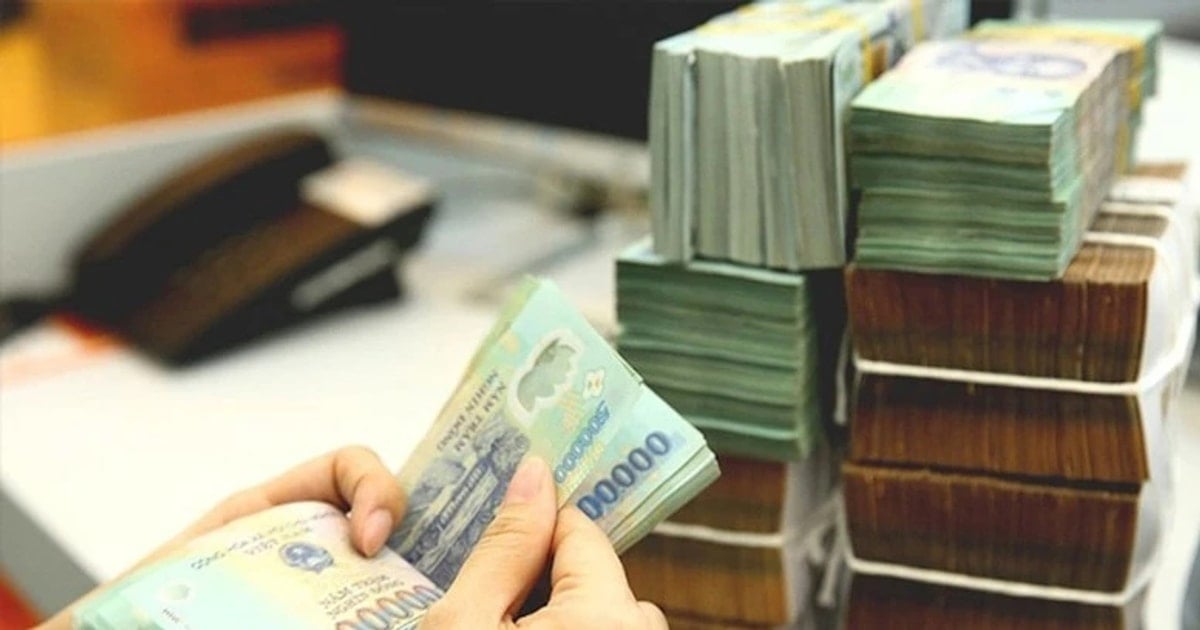In the context of Vietnam's economy entering a period of strong restructuring, requiring effective mobilization and allocation of resources, accordingly, studying the elimination of credit room is a necessary step, contributing to freeing up resources and increasing competitiveness in the banking system.
From tight to flexible
In the previous stage, the use of credit growth limits (credit room) was a management tool to control inflation, stabilize the macro economy and ensure the safety of the banking system. However, in response to current practical requirements, the Government has requested the State Bank to study and consider removing the credit room to free up resources for development.

Dr. Can Van Luc – Chief Economist of BIDV acknowledged that applying a credit ceiling is a temporary solution in a period of high inflation and an underdeveloped financial system. “However, in the long term, it needs to be replaced by more modern tools such as capital adequacy index, credit risk control and market information transparency.”
Accordingly, the issue of eliminating the credit room has been brought up on the agenda many times. Up to now, although it has become more flexible, the credit room mechanism has not been removed. However, with the current determination of the Government, perhaps the journey to eliminate the credit room is getting closer.
In general, the removal of the “credit room” mechanism will open an important turning point, helping banks to be “untied” in their credit granting activities. When no longer limited by growth limits set by the State Bank, credit institutions can be more flexible in providing capital, thereby creating more favorable conditions for both businesses and people to access bank capital.
Not only contributing to unblocking capital flows in the economy, eliminating credit room also approaches international practices, thereby improving the competitiveness of the financial system, creating conditions to attract foreign investment flows and strengthening national prestige.
In addition, limiting credit room will weaken the internal reform motivation. According to Dr. Nguyen Tri Hieu - a financial expert, "When banks only need to ask for room instead of improving risk management capacity for sustainable growth, the policy unintentionally eliminates the motivation to improve the quality of operations."
To free up resources
Associate Professor, Dr. Dinh Trong Thinh (Academy of Finance) analyzed: “Credit room is a temporary administrative tool. If used for a long time, it will distort credit flow, limit market and competitive dynamics between banks.” However, removing credit room does not mean “freeing up” credit flow but switching to a more modern operating mechanism – based on market principles and controlling internal risks of each bank.
According to the State Bank's report, by the end of June 2025, over 80% of the entire system's banks had met Basel II standards, of which 10 banks had applied Basel III, and were capable of taking responsibility for their own credit growth rates. Along with the internal credit rating system, asset quality control, capital adequacy ratio, liquidity, etc., allowing banks to decide on their own outstanding debt is entirely possible.
According to Mr. Nguyen Quoc Hung - General Secretary of the Vietnam Banking Association - said: "Removing the credit room will help banks proactively plan their business, provide timely capital for the economy, especially priority areas such as high-tech agriculture, green industry, and renewable energy."
However, according to some banking and finance experts, removing the credit room will also have challenges and limitations that need to be paid close attention to. Although removing the credit room is a necessary step, it needs to be done carefully to avoid "hot credit explosion" that poses risks to the system. At the same time, avoid pouring credit into real estate and high-risk sectors.
Dr. Vo Tri Thanh – Director of the Institute for Brand and Competitiveness Strategy Research – emphasized: “Smart monitoring, data connectivity and early risk warning are the foundations for effectively replacing credit rooms.”
Therefore, removing the room needs to be accompanied by a policy framework to direct capital flows into production, business, infrastructure, and green transformation. Statistics from the State Bank in the second quarter of 2025 show that credit to real estate currently accounts for about 21.7% of total outstanding loans.
Accordingly, removing the credit room is a necessary step, demonstrating the shift in monetary policy management from administrative to market, more transparent and modern. In the context of the economy needing abundant capital for recovery and green transformation, removing mechanical barriers will contribute to freeing up resources and increasing healthy competition in the banking system.
However, to ensure effectiveness, removing credit room must be accompanied by improving monitoring capacity, risk warning, classifying banks according to capacity and building a mechanism to promptly handle violations. This is not only a technical reform but also a big step forward in the innovation of the current financial and banking institutions in our country./.
Source: https://baolamdong.vn/bo-room-tin-dung-nen-hay-khong-381616.html

































































































Comment (0)